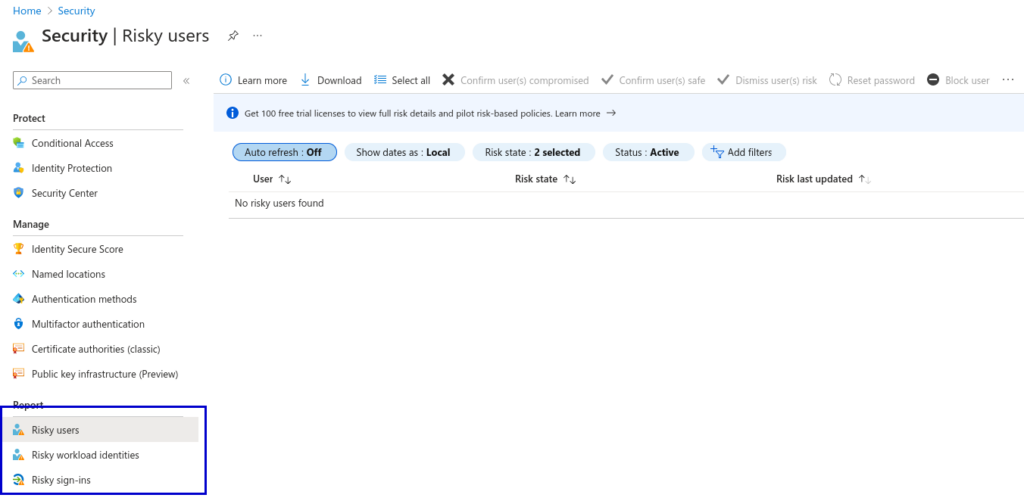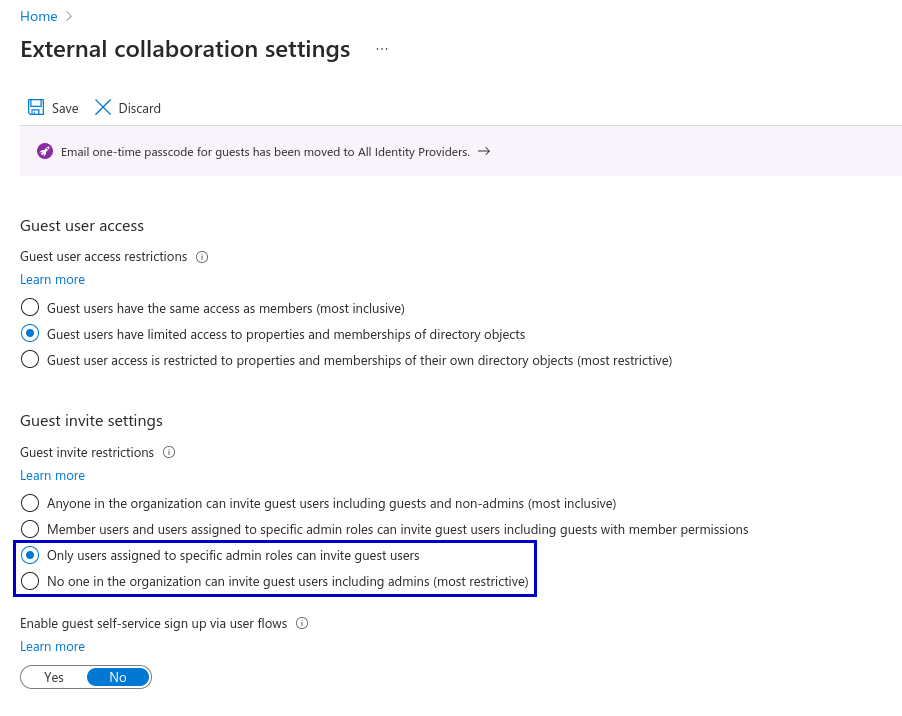Prometei Botnet Activity Spikes
Palo Alto Networks has observed a spike in Prometei activity since March 2025, pointing to a resurgence of the botnet.
The post Prometei Botnet Activity Spikes appeared first on SecurityWeek.
SecurityWeek – Read More
Palo Alto Networks has observed a spike in Prometei activity since March 2025, pointing to a resurgence of the botnet.
The post Prometei Botnet Activity Spikes appeared first on SecurityWeek.
SecurityWeek – Read More
Misconfigured Docker instances are the target of a campaign that employs the Tor anonymity network to stealthily mine cryptocurrency in susceptible environments.
“Attackers are exploiting misconfigured Docker APIs to gain access to containerized environments, then using Tor to mask their activities while deploying crypto miners,” Trend Micro researchers Sunil Bharti and Shubham Singh said in an
The Hacker News – Read More
The future of secure digital engagement depends on continuous identity verification and proofing that can scale with risk.
The post Identity Is the New Perimeter: Why Proofing and Verification Are Business Imperatives appeared first on SecurityWeek.
SecurityWeek – Read More
Newly discovered spyware has sneaked into Apple’s App Store and Google Play to steal images from users’ mobile devices.
The post Photo-Stealing Spyware Sneaks Into Apple App Store, Google Play appeared first on SecurityWeek.
SecurityWeek – Read More
The U.S. House of Representatives has formally banned congressional staff members from using WhatsApp on government-issued devices, citing security concerns.
The development was first reported by Axios.
The decision, according to the House Chief Administrative Officer (CAO), was motivated by worries about the app’s security.
“The Office of Cybersecurity has deemed WhatsApp a high-risk to users
The Hacker News – Read More
A Chinese APT has been infecting SOHO routers with the ShortLeash backdoor to build stealthy espionage infrastructure.
The post Chinese APT Hacking Routers to Build Espionage Infrastructure appeared first on SecurityWeek.
SecurityWeek – Read More
Tech support scammers are using sponsored ads and search parameter injection to trick users into calling them.
The post Apple, Netflix, Microsoft Sites ‘Hacked’ for Tech Support Scams appeared first on SecurityWeek.
SecurityWeek – Read More
Microsoft Azure is probably the most widely used cloud platform in Switzerland, powering businesses of all sizes, from startups to multinational companies. According the the official Microsoft page over 95% of Fortune 500 companies rely on Microsoft Azure in one form or another. With this industry-wide adoption, it has become a critical component of modern-day IT infrastructure. However, as more and more companies migrate to cloud or cloud-local hybrid infrastructure, the security risks that go along with these environments increase.
In this post, we will explore common Azure Identity & Access Management (IAM) as well as Entra ID vulnerabilities and misconfigurations, why they pose a threat and how to mitigate them. Whether you are an IT admin, security engineer or cloud architect, understanding these risks helps keeping your company’s cloud assets secure.

Identity and Access Management (IAM) is the heart of every cloud environment. Comparable functionality and security features are present in every cloud environment such as Microsoft Azure, Amazon AWS or Google Cloud. IAM is a security framework that controls who can access which cloud resource and what actions they can perform. It ensures that the right users and services have appropriate permissions to perform their respective tasks and duties while preventing unauthorized access.
Microsoft Entra ID (formerly known as Azure Active Directory) is Microsoft’s cloud-based identity and access management service. It is used to manage user identities and control their access to applications and resources as well as enforce security policies across the environment.
Entra ID and Azure IAM misconfigurations can leave organizations exposed to several cybersecurity threats including but not limited to data breaches, ransomware attacks as well as compliance violations. Cybercriminals are often targeting cloud environments and aim to exploit common vulnerabilities that can often be prevented with proper cloud security controls.
This occurs when users, service principals or applications are assigned roles with more privileges than necessary. Most commonly privileged roles such as Owner or Contributor are used when roles with fewer privileges could have sufficed.
This allows accounts to access critical functionality or modify resources. If an account with excessive permissions is compromised an attacker can leverage these for privilege escalation as well as lateral movement through the environment. Unauthorized modifications can lead to data breaches, downtime or even resource deletion.
Roles should always be assigned bearing in mind the least privilege principle. High-privileged roles should only be granted with caution. Duties should be segmented and roles should be assigned only as required. Perform regular audits of custom roles as well as role assignments to ensure permissions remain appropriately assigned.
This vulnerability occurs when Azure accounts are not configured to use or enforce Multi-Factor Authentication (MFA) and rely solely on single-factor authentication like passwords.
Without MFA, compromised credentials can grant attackers unfettered access to Azure resources, leading to potential data breaches, unauthorized modifications, and lateral movement within the environment.
MFA should be enforced across all accounts, but especially for privileged access. This can be done by implementing conditional access policies, regularly reviewing authentication settings as well as educating users about the importance of strong authentication methods.
Furthermore, privileged Azure accounts should have dedicated conditional access policies such as compliant company devices, IP whitelisting, etc. in addition to MFA.
Enable MFA for users: https://learn.microsoft.com/en-us/partner-center/security/mfa-for-users
This can occur when user or service accounts are no longer in use, such as accounts belonging to former employees, expired vendors or obsolete services, remain active in Entra ID without proper deactivation or monitoring.
The resulting unused accounts pose a significant security risk, as they can be compromised without detection, providing an easy entry point for attackers. If credentials are leaked or stolen, the accounts could be used for unauthorized access, privilege escalation or lateral movement within the cloud environment.
Regularly audit and disable unused accounts using Entra ID Access Reviews and automate lifecycle policies. Strict offboarding procedures should be implemented to remove or at least disable accounts when employees leave. Furthermore, Conditional Access Policies can be used to block inactive accounts. To detect suspicious logins from old or dormant accounts Azure Identity Protection can be utilized.
Azure Identity Protection Documentation: https://learn.microsoft.com/en-us/entra/id-protection/overview-identity-protection
In the Entra ID portal risky users and sign-ins can be checked in the Security – Reports section:

When Azure guest access is left enabled, external users can be added to your Azure environment. These external users can then also invite further external users without strict controls.
Enabling guest access can inadvertently grant external entities access to sensitive internal resources. This increases the risk of unauthorized data exposure, lateral movement as well as potential breaches through third parties.
If your business does not require guest access by external business partners, guest access should be disabled. If external collaboration is needed, strict invitations should be enforced. Furthermore, conditional access controls should be implemented for the guest accounts. Regular audits of the guest accounts and their permissions should be performed, to ensure only authorized users are granted access.
Disabling that guest users can invite further guest users via “External collaboration settings” in the Entra ID portal:

When Azure Privileged Identity Management (PIM) is not enabled for high-privilege roles such as Global Administrator or Owner, permanent administrative access is possible instead of just-in-time (JIT) or approval-based role activation.
Without PIM, privileged accounts always have elevated access. This increases the risk of privilege escalation and lateral movement upon credential theft or via insider threats. If an attacker compromises a high-privilege account, unrestricted changes to resources can be performed, sensitive data can be stolen or security controls can be disabled.
Enabling Azure PIM to enforce just-in-time access, requires users to activate high-privilege roles only when needed. Approval workflows, time-bound access and notifications for role activations can further improve the security of high-privilege access.
How to set up PIM for Azure: https://learn.microsoft.com/en-us/entra/id-governance/privileged-identity-management/pim-getting-started
Securing Azure environments requires proactive Identity and Access Management practices to prevent common misconfigurations. As outlined above multiple vulnerabilities can arise from neglecting IAM best practices. Regular audits should be performed and the shown mitigation strategies should be implemented to reduce security risks.
By implementing strong IAM controls, businesses can fortify their cloud security posture and mitigate common attack scenarios.
In today’s threat landscape, staying ahead of IAM misconfigurations is not just best practice; it’s essential.
Over 95% of Fortune 500 companies use Microsoft Azure: https://azure.microsoft.com/en-us/resources/cloud-computing-dictionary/what-is-azure
Overprivileged Permissions: https://learn.microsoft.com/en-us/security/zero-trust/develop/overprivileged-permissions
Least Privilege Access: https://learn.microsoft.com/en-us/entra/identity-platform/secure-least-privileged-access
Access Reviews: https://learn.microsoft.com/en-us/entra/id-governance/access-reviews-overview
Conditional Access: https://learn.microsoft.com/en-us/entra/identity/conditional-access/overv
Compass Security Blog – Read More
The Canadian Centre for Cyber Security and the U.S. Federal Bureau of Investigation (FBI) have issued an advisory warning of cyber attacks mounted by the China-linked Salt Typhoon actors to breach major global telecommunications providers as part of a cyber espionage campaign.
The attackers exploited a critical Cisco IOS XE software (CVE-2023-20198, CVSS score: 10.0) to access configuration
The Hacker News – Read More
Salt Typhoon, a China-linked group, is exploiting router flaws to spy on global telecoms, warns a joint FBI and Canadian advisory issued in June 2025.
Hackread – Latest Cybersecurity, Hacking News, Tech, AI & Crypto – Read More